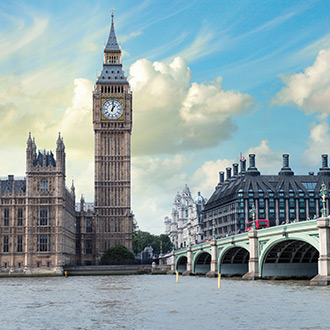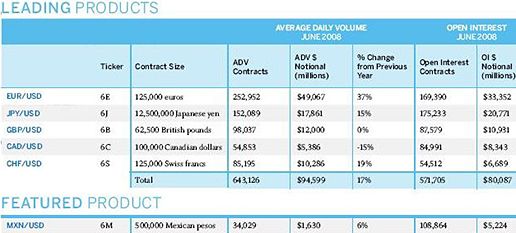Forex History
Updated: August 14, 2018
The Barter Economy

Forex trading requires the existence of national currencies that are generally accepted as a store of value.
Forex traders trade these national currencies in pairs, speculating on the strength or weakness of one currency against another. A currency with an artificial rate set by a government is not appropriate for FX trading, nor is a currency that is highly volatile due to political unrest or hyperinflation.
This article traces the evolution of money from barter, to gold, to Eurodollars held in accounts outside the U.S.
Knowing the history of money helps a Forex trader understand the factors behind a currency’s strength or weakness and price fluctuations, enabling them to make more informed trade decisions.
People throughout time have always traded for a variety of reasons.
Some reasons have been to sell finished products for money, or obtain desired raw materials by barter, or to buy and sell commodities or other goods only for the reason of attempting to profit from the transaction.
As an example, a baker may need wheat to make bread; a farmer may have wheat but may need meat, and a butcher may need bread and have meat.
In this example, these individuals have a potential trade based on need.
However, the barter system only provides a means for people to obtain goods and services they need as long as they have goods or services desired by other people.
In recent times the barter system is still used.
During the cold war, when the Russian ruble was nearly worthless, Russia was in need of wheat due to a bad harvest and the United States had a surplus.
However, the US had a shortage of oil and Russia had a surplus. A barter exchange of oil for wheat took place between the 2 countries enabling each to take advantage of their position to obtain the other’s surplus.
However, as you can imagine, the barter system is not perfect.
It lacks convertibility (what is a cow worth and what can it convert into), portability (how easy is it to travel with a cow), and divisibility (if it is agreed that a cow is worth 4 sheep, what do you do if you only want 1 sheep?).
The introduction of money solved these three negative characteristics of the barter system and has allowed for international commerce and the Forex market to develop to the point it is at today.
The Gold Standard and the Bretton Woods Agreement

The history of Forex trading was heavily influenced by The Gold Standard and The Bretton Woods Agreement. The Bretton Woods Agreement was adopted in 1944 with the primary objective of the Agreement being to provide international monetary stability by preventing money from fleeing across nations.
Its secondary objective was to restrict currency speculation. Prior to the Bretton Woods Agreement, the Gold Standard dominated the international economic system and paved the way for our modern foreign exchange market.
The Gold Standard existed between the years of 1815 and World War I. Under the Gold Standard, currencies gained stability, as each country's currency was backed by gold.
It abolished the age-old practice used by kings and rulers of arbitrarily degrading the value of their currency, triggering inflation.
The Gold Standard had its faults. As an economy strengthened, a country would import heavily from abroad until it ran down its gold reserves.
As a result, the money supply would shrink, interest rates would rise and economic activity would slow - creating cyclical recessions.
Ultimately, when the price of goods would hit bottom, other nations would go on buying sprees that would inject the local economy of the country with gold, increasing its money supply, and consequently driving down interest rates and producing wealth in the country’s economy.
Such boom-bust economic patterns prevailed throughout the Gold Standard, until the outbreak of World War I.
Under the Bretton Woods Agreement, participating countries agreed to maintain the value of their currency within a narrow margin against the US Dollar and a corresponding rate of gold.
Countries were prohibited from devaluing their currencies to their trade advantage and were only allowed to do so if the devaluation was less than 10%.
During the 1950s, the ever-expanding volume of international trade led to massive movements of capital generated by post-world war construction. This economic reality destabilized foreign exchange rates, which contradicted the Bretton Woods Agreement.
It was clearly time for a change; the Bretton Woods Agreement was finally abandoned in 1971, and the US Dollar was no longer convertible into gold. By 1973, currencies of major industrialized nations floated more freely.
The value of a country's currency was now controlled by the forces of supply and demand and no longer by gold reserves.
Prices of currencies were floated daily, and ever increasing volume, speed and price volatility rapidly developed throughout the 1970s.
This gave rise to new financial instruments, market deregulation and trade liberalization.
In the 1980s, cross-border capital movement accelerated with the advent of computers and technology, extending foreign exchange trading throughout the Asian, European and American time zones.
Transactions in foreign exchange rocketed from about $70 billion a day in 1980, to more than $2.4 trillion a day in 2003.
The Explosion of the Eurodollar Market

A major catalyst to the growth of Forex trading was the rapid development of the Eurodollar market - where US Dollars are deposited in banks outside the US.
In addition, Euro-markets are those where assets are deposited outside the currency of origin.
The Eurodollar market first came into being in the 1950s when Russia's oil revenue - all in Dollars - was deposited outside the US in fear of being frozen by US regulators.
This gave rise to a vast offshore pool of Dollars outside the control of US authorities.
The US government imposed laws to restrict Dollar lending to foreigners. Euro-markets were particularly attractive because they had far less regulations and offered higher yields.
From the late 1980’s onwards, US companies began to borrow offshore, finding Euro-markets a highly attractive alternative for holding excess liquidity, as well as for providing short-term loans and financing of imports and exports.
London was (and remains) the principal Forex market place.
In the 1980’s, London became the financial center of the Eurodollar marketplace when British banks began lending Dollars as an alternative to Pounds sterling in order to maintain their leading position in global finance.
The geographical location of London (operating during Asian and American market hours) is also instrumental in preserving its dominance in the Euro-marketplace.
 Average Daily FX Volume. Source: Chicago Mercantile Exchange
Average Daily FX Volume. Source: Chicago Mercantile Exchange
Get Started with Your Financial Education
This content is intended to provide educational information only. This information should not be construed
as individual or customized legal, tax, financial or investment services. As each individual's situation
is unique, a qualified professional should be consulted before making legal, tax, financial and investment
decisions.
The educational information provided in this article does not comprise any course or a part of any course
that may be used as an educational credit for any certification purpose and will not prepare any User
to be accredited for any licenses in any industry and will not prepare any User to get a job. Past
results are not a guaranty of future performance.